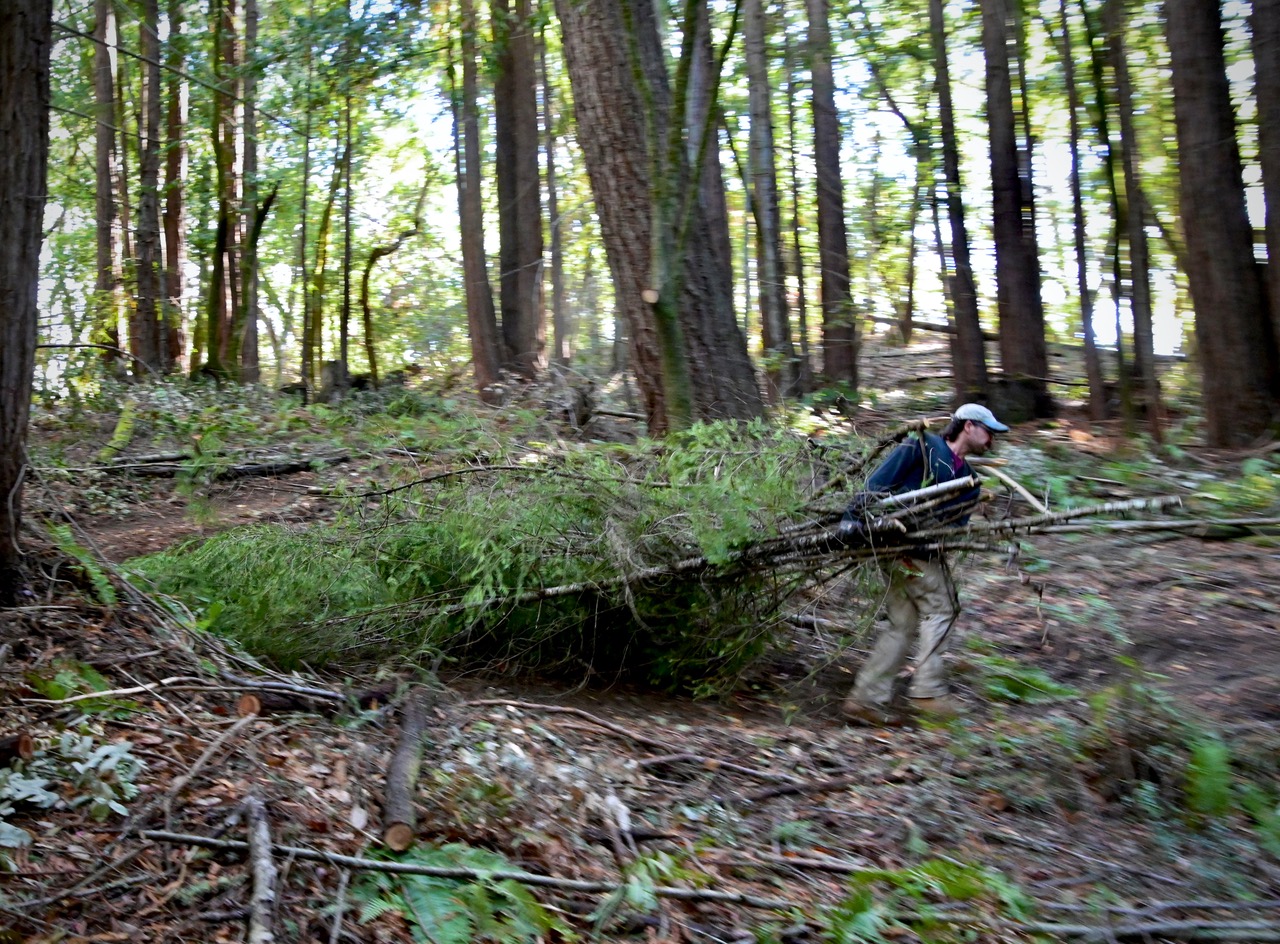‘Slash Ain’t Trash, It’s Beneficial Biomass!’ – Brock Dolman
For the past few months, OAEC’s Wildlands team has been working hard applying for permits to restore a number of eroding ephemeral (Class III) watercourses that run through the OAEC & Sowing Circle property. During the rainy season, these channels deliver sediment downstream to Dutch Bill Creek, one of the most critical watersheds in the Russian River basin for the recovery of endangered Coho salmon and threatened Steelhead Trout. Gullies also effectively dehydrate the adjacent landscape by draining shallow groundwater to their low points, just like pulling the drain out of a bathtub.
One way of stabilizing and repairing gullies is to pack them with brush in order to slow the flow and distribute the energy of water, trap soil and leaf litter particles, and ultimately arrest sediment delivery downstream. With various limbing and thinning projects underway, we recognized the opportunity to stack functions and use the abundance of resulting material onsite (often called “slash”) to stuff nearby gullies! To do this work legally, we had to jump through a number of state agency hoops, as these ephemeral channels technically fall under state jurisdiction and the leftover “slash” from our forest fuel load mitigation work is technically considered “waste discharge.”
The permitting process involved submitting a “Notice of Intent” to the North Coast Regional Water Quality Control Board, along with pre-project photos and maps. After further conversation and review, the Water Board cleared our project and issued OAEC a “Notice of Applicability”* (NOA). We then also had to apply for a Lake and Streambed Alteration Agreement (LSAA) through the California Department of Fish & Wildlife. Overall, the permitting process took a lot of time and back-and-forth with the agencies, but hopefully by trialing this novel project, OAEC can help create more streamlined pathways for restoration in the future.
With a brief window of dry weather stipulated by our permits, a group of OAEC staff and volunteers got to work on Monday and stuffed nearly 200 feet of gully. We started by carefully placing fresh green boughs (often fir or redwood) with the tips facing upstream in an interlocking fashion as if we were plastering the channel bed & banks, then amended with woody debris until filling the entire height and width of the gully. The end result? A dense but porous matrix that will stop erosion, and as it decomposes over time, will sequester carbon, create a rich compost sponge for nearby trees and vegetation, and increase our upland water holding capacity!
*The full name for this type of permit is “Notice of Applicability (NOA) for Coverage under the Conditional Waiver of Waste Discharge Requirements for Specific Categories of Low Threat Discharge in the North Coast Region R1-2017-0039″
Check out this brief 1-minute of Brock explaining the process.






